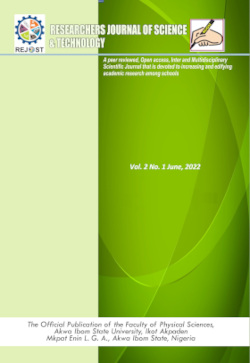Attendance Based Systems for Face Recognition using a Camera Rail Approach
Keywords:
Angular field of view, Micro-controller, Camera architectures, Object distance, Stop positionsAbstract
Many research works on face recognition-based attendance systems have employed either a single camera or multi camera architecture in an attempt to capture and produce images that cover the entire participants of a class. Single stationary camera architectures have shown to have blind spots. This paper proposes a cost-effective single camera rail system that can be adaptive and implemented with any face recognition system designed to greatly improve audience coverage. It can be deployed in various audience locations and managed centrally. It also can be implemented in either wired or wireless modes. The system is a microcontroller-based (Embedded Systems Programming (ESP) microcontroller ESP 8266) system that consists of a single camera placed on a rail to allow for capturing of images of different sections of a class. The micro-controller determines each stop position of the camera by calculating the stop positions based on the configuration data (field of view angle, the maximum object distance and the rail length) stored in the MYSQL database. The stop positions are each passed to the stepper motor to pull the camera on the rails with the aid of a beaded string. The camera feed is captured programmatically using the Open-Source Computer Vision Library (Open CV). The frame at each stop position is automatically saved within a folder created for the class. Test results show that the entire participants of a class were covered and captured with stop positions calculated by the system and depending on the size of the class, the system can comfortably calculate stop positions that can cover the class attendees and the images captured was successfully transferred to the face recognition system for further processing.
References
An, L., Kafai, M., & Bhanu, B. (2013). Dynamic Bayesian network for unconstrained face recognition in surveillance camera networks. IEEE Journal on Emerging and Selected Topics in Circuits and Systems, 3(2), 155-164. https://doi.org/10.1109/jetcas.-2013.2256752
Baig, S., Geetadhari, K., Noor, M. A., & Sonkar, A. (2022). Face recognition-based attendance management system by using machine learning. International Journal of Multi-disciplinary Research and Growth Evaluation, 3(3), pp. 1–4. https://doi.org-/10.54660/anfo.2022.3.3.1
Chaoyang Li, Rosen, A., & Bourgeois, A. G. (2016). On K-full-view-coverage-algorithms in camera sensor net-works. 2016 2nd IEEE International Conference on Computer and Commu-nications (ICCC), 2218 - 2222.
Credé, M., Roch, S. G., & Kieszczynka, U. M. (2010). Class attendance in college: A meta-analytic review of the relationship of class attendance with grades and student characteris-tics. Review of Educational Research, 80 (2), 272-295.
Fuzail, M., Nouman, H. M. F., Mushtaq, M. O., Raza, B., Tayyab, A., & Talib, M. W. (2014). Face detection system for attendance of class’ students. Interna-tional journal of multidisciplinary sciences and engineering, 5(4).
Gomes, C., Chanchal, S., Desai, T. & Jadhav, D. (2020). Class Attendance Management System using Facial Recognition. In ITM Web of Conferences (Vol. 32, p. 02001). EDP Sciences.
Harguess, J., Hu, C., & Aggarwal, J. K. (2009). Fusing face recognition from multiple cameras. 2009 Workshop on Applications of Computer Vision (WACV).https://doi.org/10.1109/wacv.2009.5403055
Kalel, K., Shinde, A., & Shinde, A. S. (2022). AI Based Attendance System Using Faces Recognition. Journal homepage: www. ijrpr. com ISSN, 2582, 7421.
Lim, J. H., Teh, E. Y., Geh, M. H., & Lim, C. H. (2017). Automated classroom monitoring with connected visioning system. 2017 Asia-Pacific Signal and Information Processing Association Annual Summit and Conference (APSIPA ASC), 386-393. https://doi.org/10.1109/apsipa.2017.8282063
Mothwa, L., Tapamo, J., &Mapati, T. (2018). Conceptual model of the smart attendance monitoring system using computer vision. 2018 14th International Conference on Signal-Image Technology & Internet-Based Systems (SITIS), 229-234. https://-doi.org/10.1109/sitis.2018.00042
Park, U., Choi, H. C., Jain, A. K., & Lee, S. W. (2013). Face tracking and recognition at a distance: A coaxial and concentric PTZ camera system. IEEE transactions on information forensics and security, 8(10), 1665-1677.
Satpute, R., Sontakke, S., Gondaliya, B., Sonawane, T. &Suryawanshi, K. (2020). Attendance Management System Using Face Recognition. biometrics, 7(05).
Trivedi, A., Tripathi, C. M., Perwej, Y., Srivastava, A. K., &Kulshrestha, N. (2022). Face Recognition Based Automated Attendance Management System. Int. J. Sci. Res. Sci. Technol, 9, 261-268.
Wang, Y., Lu, K., &Zhai, R. (2014). Challenge of multi-camera tracking. In 2014 7th International Congress on Image and Signal Processing (pp. 32-37).

Downloads
Published
How to Cite
Issue
Section
License
Copyright (c) 2023 Researchers Journal of Science and Technology

This work is licensed under a Creative Commons Attribution-NonCommercial-NoDerivatives 4.0 International License.




